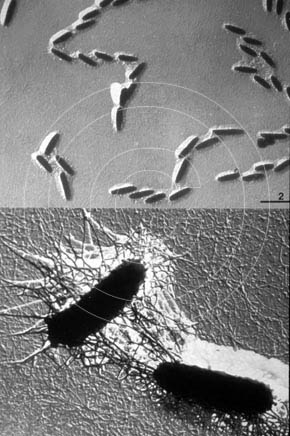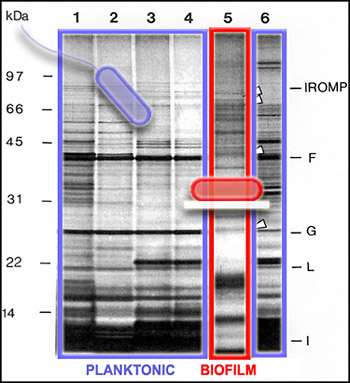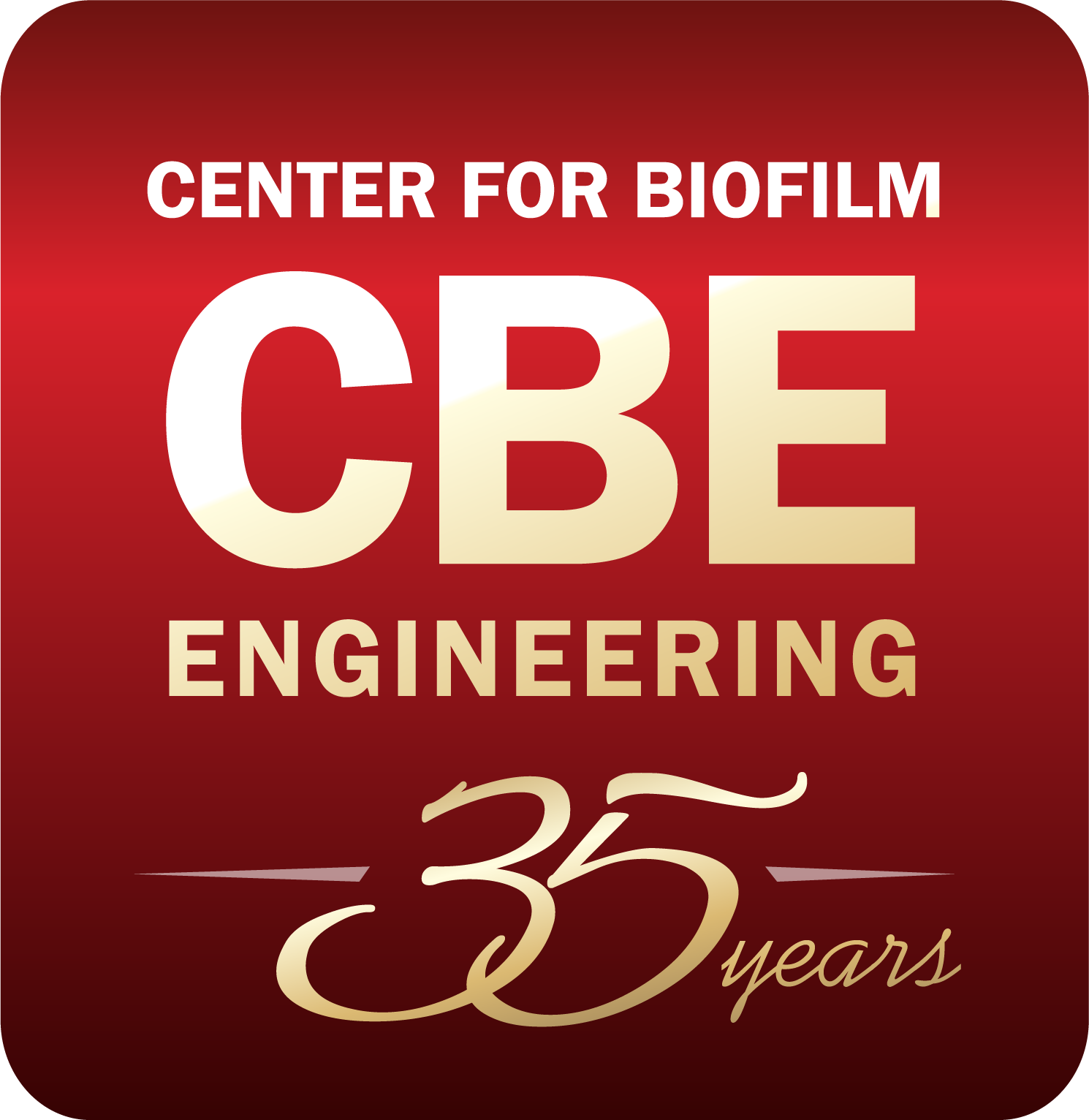Biofilm strategies: Initial attachment
 |
 |
||
|
Scanning Electron Micrograph (SEM) of bacteria attached to surface by means of self-produced
extracellular polymeric substances (EPS).
Courtesy, J.W. Costerton |
A protein gel showing differences in gene expression between planktonic (free-floating)
bacteria and attached bacteria (Lane 5) of the species Pseudomonas aeruginosa. Each dark band represents proteins produced as a result of gene activity. The smaller
proteins are able to migrate through the matrix faster; thus they are at the bottom
of the gel. Larger proteins appear at the top (scale on left). Darker bands indicate
higher concentrations of proteins. Courtesy, Hongwei Yu and J.W. Costerton
|
||
Practical ImplicationsThe extreme stickiness of extracellular matrix material is being studied by researchers to develop "green" (natural) adhesives. |
Practical ImplicationsUnderstanding which genes are up-regulated or down-regulated when microbes come into contact with a surface may give scientists clues about how to interrupt the sequence of gene activation, and so affect cells' ability to attach to a surface. This approach may be particularly valuable for use with implanted medical devices, such as artificial joints. |
||
|
|
Next section: Building communities |

